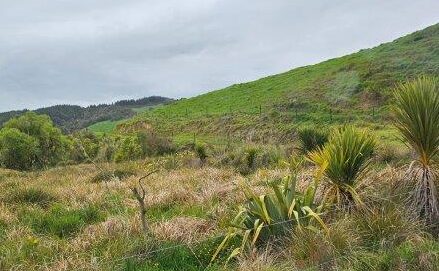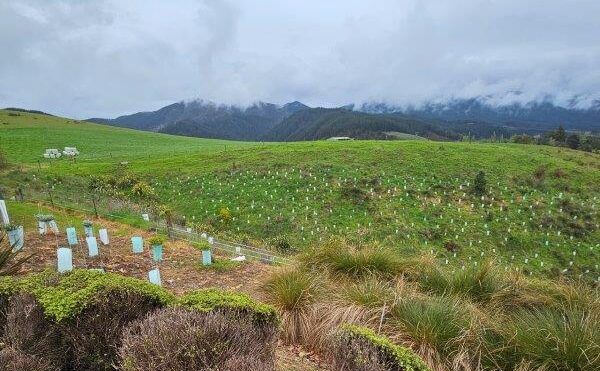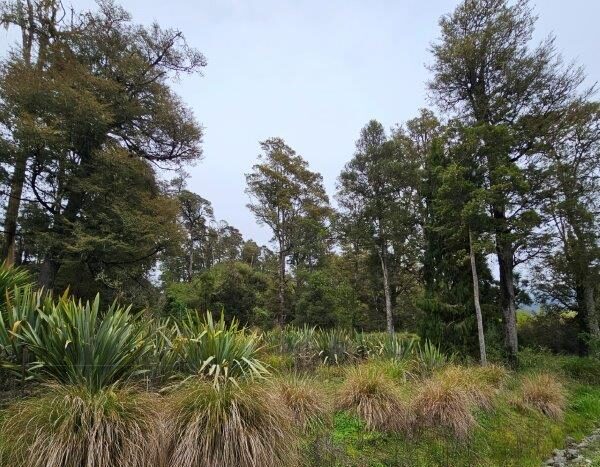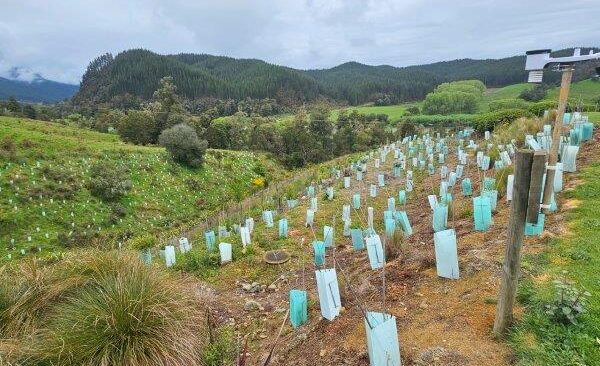Living, farming and looking after the land by the Motueka River
Evan Baigent has been around rivers all his life. He grew up on the Wakefield farm first settled by his family in 1843. Evan and his wife Adrienne farmed dairy cows on this land adjacent to the Wai-iti River and Pigeon Valley Stream near Wakefield. In addition to this site they have grazed and owned land within three further river catchments – Buller, Motupiko and Upper Motueka.
Now semi-retired they trade and finish beef cattle on land they own and live on in the Motueka Valley. This video clip shows the proximity of the farm to the Motueka River.

With their retirement from the demands of dairy farming, there is now more time available to spend on environmental planting. Previous attempts to establish native riparian margins and shelter had failed due to lack of time to be allocated to after planting care. As a result plant survival has improved markedly.
The Baigents’ have planted 12,000 natives since moving to live on their property ten years ago. The focus has been on gullies, wetlands and land adjacent to established native bush. Marcus Woodward from Enviroplus, has provided advice and planning along with a team of planters and weeders. This has come at a cost, which Evan has calculated to be $13.50 per plant over the last five years.

Some areas have provided difficult. One wetland area planted out in 2020, initially seemed robust and healthy, but after two years some of the foliage started to go yellow and many plants were dying. Soil tests revealed that the soil in that area was low in magnesium. Evan hand fertilised the area around each plant drip line and they are recovering.

Unfortunately the latest (winter 2023) area planted in a gully near the Baigent home has suffered from the effects of last summer’s drought. The northern facing slopes were affected the most and 90% of those plants have died. The welcome 120 mm of rain at the beginning of April, which may have saved some, was quickly followed by a hard frost to kill any new growth. They hesitate to replant this area as the coming summer is expected to be similar to the last.

After some experimentation with different plant guards, Evan and Marcus have realised that for their purposes the plastic plant guards are the most successful; they let more light in for the developing shoots and can be reused – “we’ve used many guards two or three times”.
The Baigents’ have also fenced off and registered approximately three hectares of established native bush with the QE II Trust. The Ecologist, Michael North has inspected this site and identified fifty-three different native species within its boundaries; including Kahikatea, Rimu, Ferns, Totara and Matai. Adjacent to the established block but within the Trust boundary, extra Harakeke, Rimu, Beech and others have been added. Most of these plants were established in 2014. Along with bush regeneration the revitalisation of the bird life in the area has been a welcome bonus.

Weeds are and always will be a problem, ongoing maintenance of these sites is essential, tiring and expensive. Old Man’s Beard is spread by the growth of the weed on the riparian strip running alongside the Upper Motueka River. Intermittent flooding of the lower areas also stimulates new weed growth.
There was a 50 year flood in the Motueka River in 2021, which flooded an area of the lower part of the Baigents property, and the adjoining road. This damaged plants, and took a considerable amount of work to restore, but luckily they have now recovered as pictured.


The Baigents have undertaken a significant amount of environmental restoration work on their property and aim to continue to do so. They are a testament to the fact that farmers often contribute considerably to improving catchment health, they care a great deal about their land, the impact of their farming practices and the legacy they leave for future generations.

